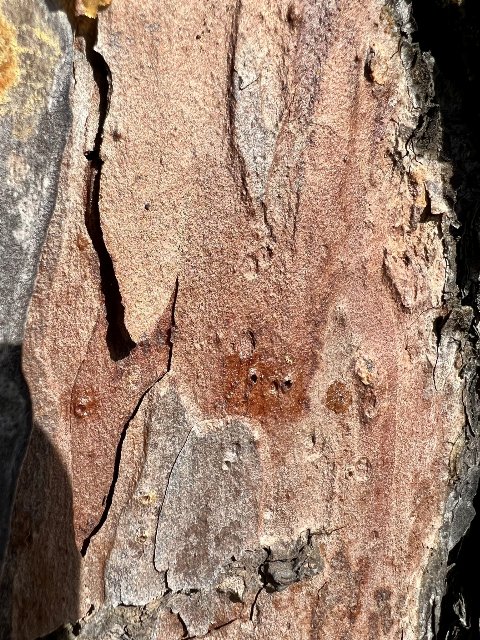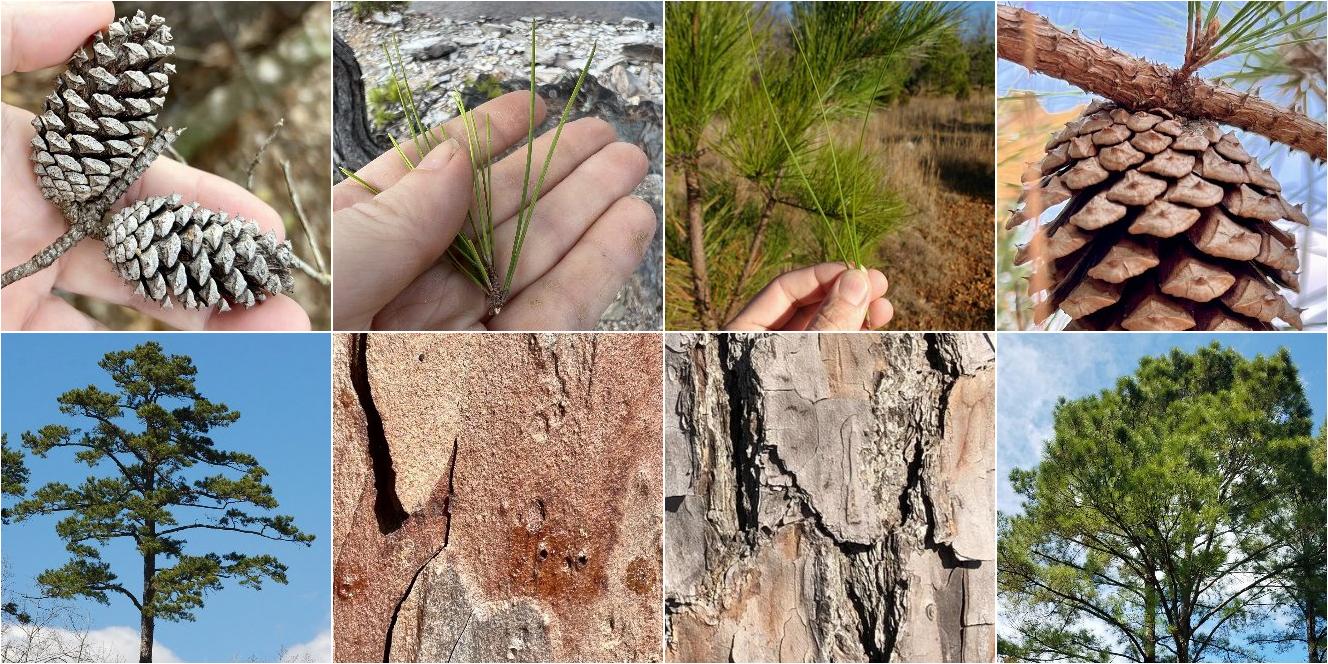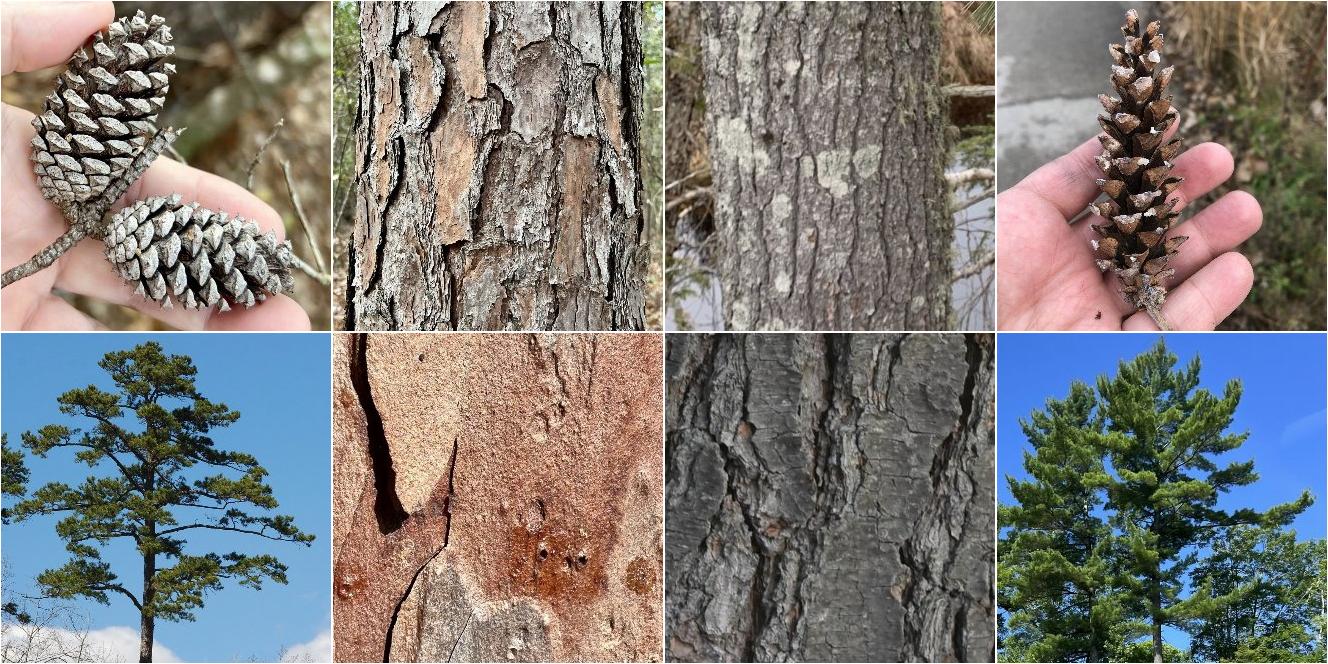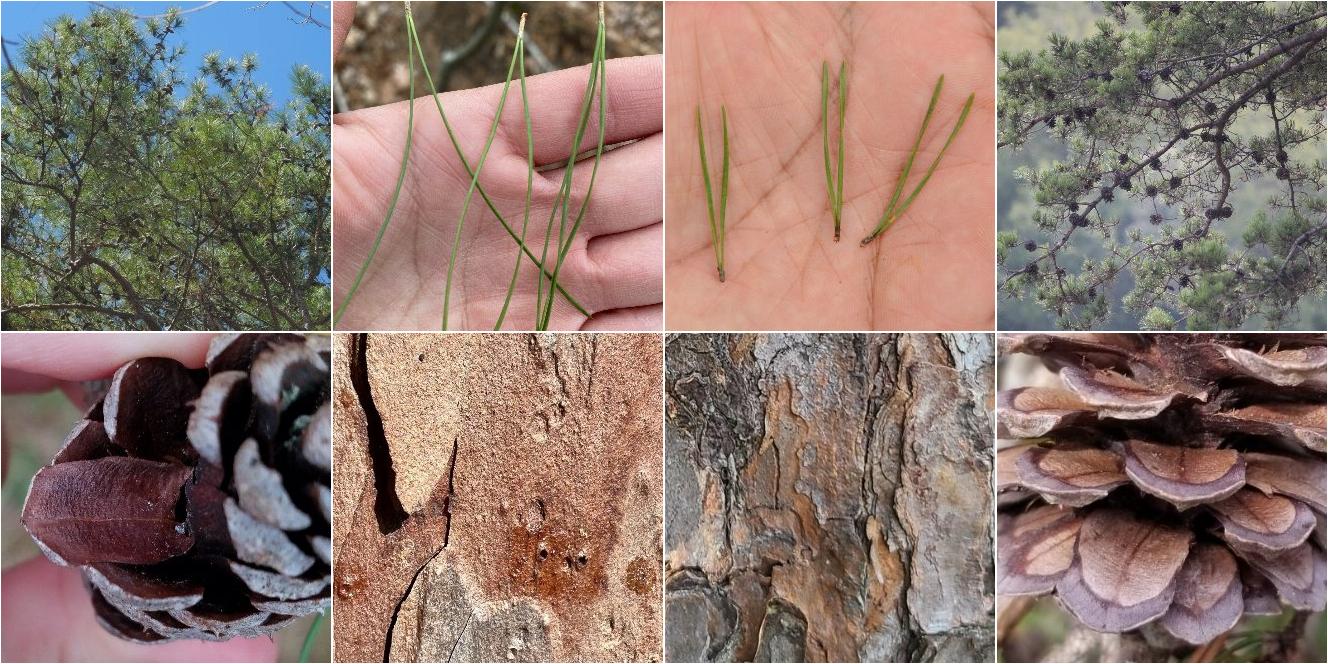Shortleaf Pine (Pinus echinata) vs. Loblolly Pine (Pinus taeda)
Updated January 7th, 2023These pines have a large area of range overlap, can occur in the same habitat, and are often confused. Both have red-brown bark with irregular rectangular plates. They can be distinguished by needle and cone length, presence of resin pockets in bark, and differences in form. P. echinata ranges farther north, is more common on dry uplands, and is more restricted to well-drained sites and leached, nutrient-poor soils with less competing vegetation. P. taeda is more common on moist bottomlands, prefers nutrient-rich soils where there is more competing vegetation, tolerates poorly-drained sites, and ranges farther south and slightly farther west.






